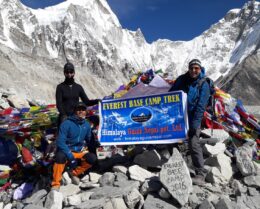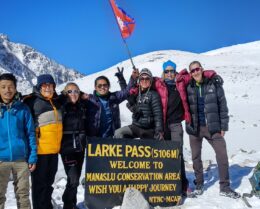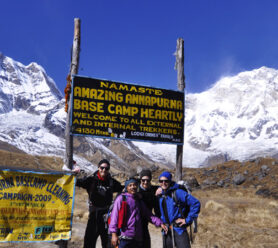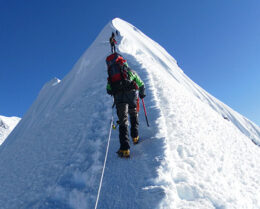Three Passes Trek: A Complete Trekking Guide to the Everest Region
PUBLISHED ON 20 July, 2023
The Three Passes Trek is clearly one of the most challenging and rewarding treks in the Everest region of Nepal. It takes you through some of the most breathtaking landscapes in the world, including the stunning Gokyo Lakes, Kala Patthar, and the Everest Base Camp.
Moreover, it involves crossing three high mountain passes – the Renjo La Pass, the Cho La Pass, and the Kongma La Pass – all of them towering above 5,000 meters. In this blog, we will delve deep into the Three Passes Trek, including its highlights, challenges, and practical tips to help you prepare for this adventure of a lifetime.
This complete guide covers all aspects of the trek, from planning and preparation to the trek itinerary and highlights. Along the way, you’ll encounter friendly locals, stunning glaciers, sparkling lakes, and panoramic views of the Himalayas. This blog provides all the information you need to plan and complete the Three Passes Trek.
It includes trekking permits, travel insurance, packing lists, accommodation, food, altitude sickness prevention, and much more. Whether you’re an experienced trekker or a first-time hiker, this guide will help you make the most of your adventure in the Everest region.
Overview of the Three Passes Trek
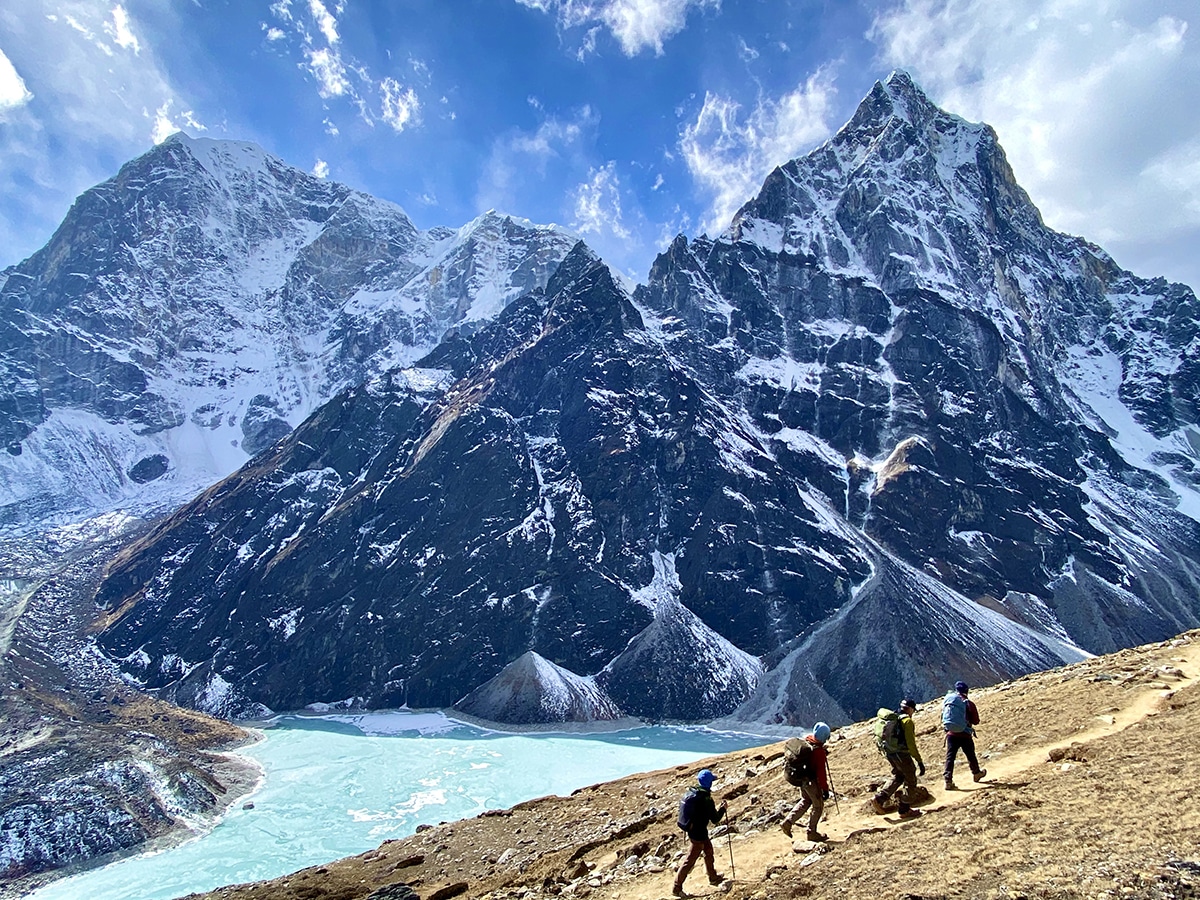
To begin with, the Three Passes Trek commences and concludes in Lukla, and to get there, travelers must take a flight from Kathmandu. Following that, the trek follows the traditional Everest Base Camp trail to Namche Bazaar.
It serves as the gateway to the Everest region. Once acclimatized in Namche Bazaar, the trek proceeds towards the Gokyo Valley and crosses the Renjo La Pass at an altitude of 5,388 meters. Continuing further, the trail leads to the serene Gokyo Lakes, offering stunning views of the Cho Oyu, Makalu, and Everest peaks.
After exploring the Gokyo Valley, the trek continues towards the Cho La Pass, towering at an altitude of 5,420 meters, and then descends to Gorak Shep, the base camp for Kala Patthar and Everest Base Camp.
After exploring Kala Patthar and Everest Base Camp, the trek crosses the Kongma La Pass. It is the highest of the three passes, at an altitude of 5,535 meters, before heading back to Lukla via the traditional Everest Base Camp trail. The entire trek takes around 18-20 days, depending on your pace and itinerary.
If You want to visit Three Passes Trek, make a reservation right now.: Book Now
Highlights of the Three Passes Trek
The Three Passes Trek is a high-altitude adventure that offers a unique experience of the Everest region. The following are some of the trek’s high points:
Gokyo Ri and Gokyo Lakes
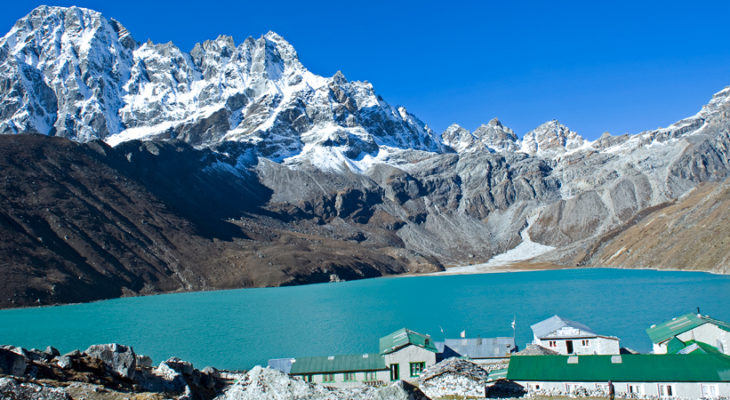
The trek offers stunning views of the Gokyo Lakes. It is a series of six glacial lakes in the Gokyo Valley, and Gokyo Ri, a peak at an altitude of 5,357 meters. The climb to Gokyo Ri is steep but rewarding, offering panoramic views of the Everest region. The lakes offer stunning views of the surrounding mountains and are considered sacred by the local people.
Kala Patthar and Everest Base Camp
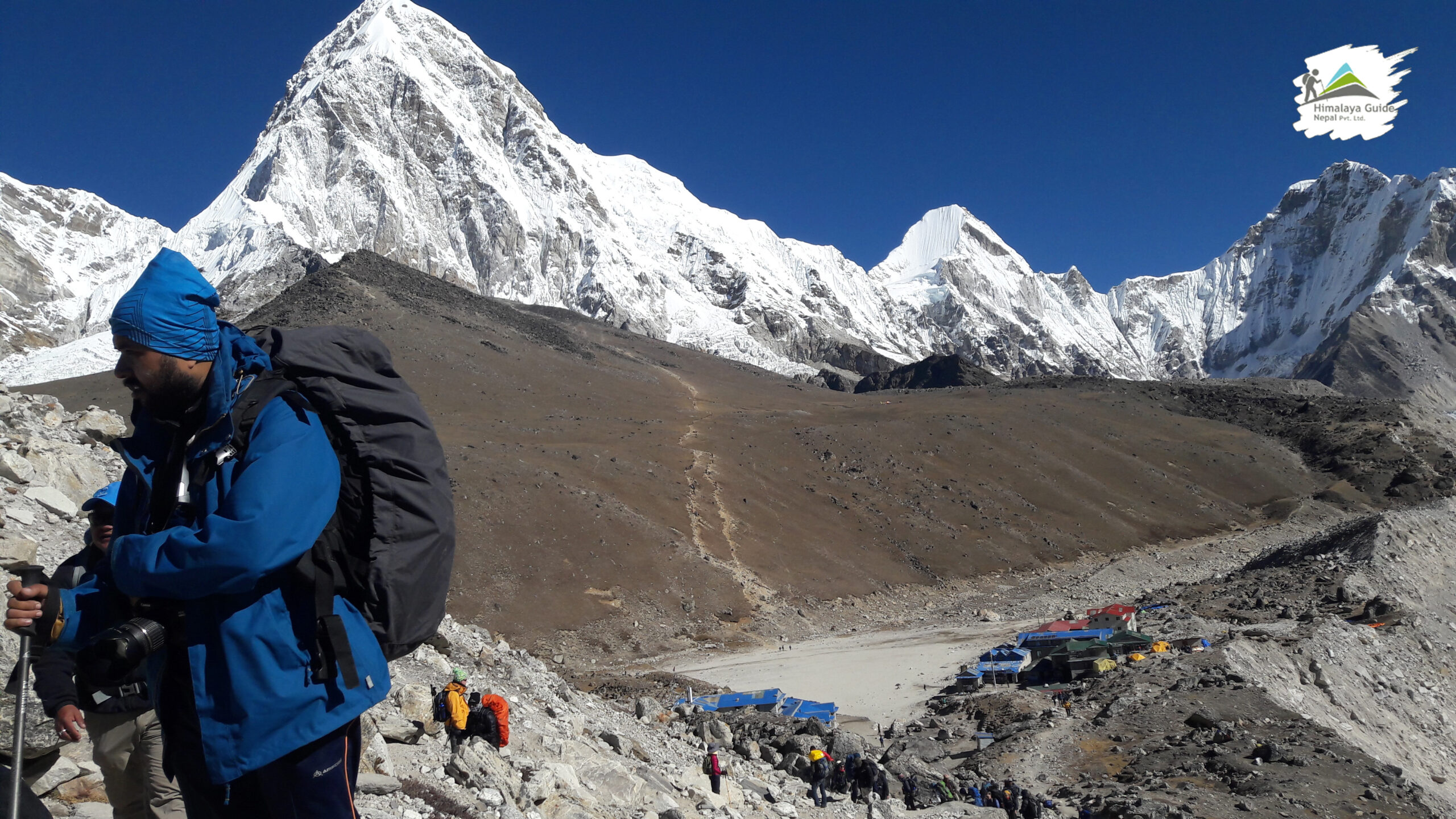
Located at an altitude of 5,545 meters, Kala Patthar is undoubtedly the best vantage point to view Everest and the surrounding peaks. Additionally, the Three Passes Trek takes you to the base camp of the world’s highest mountain, Everest (8,848 meters), offering incredible views of the Khumbu Icefall and the surrounding peaks.
Three High Mountain Passes: Renjo La Pass, the Cho La Pass, and the Kongma La Pass
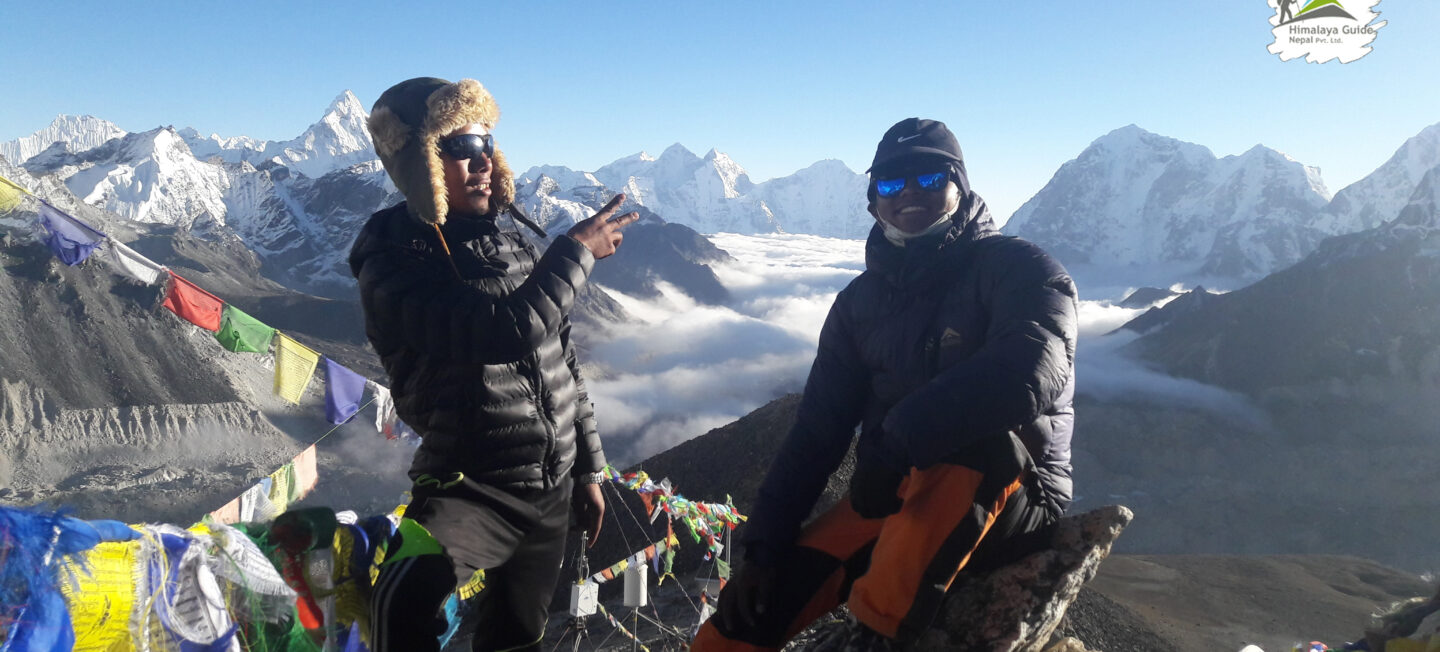
The Three Passes Trek is known for involving crossing three high mountain passes – the Renjo La Pass, the Cho La Pass, and the Kongma La Pass – all towering above 5,000 meters.
These passes offer breathtaking views of the Himalayan range, including Everest, Cho Oyu, and Makalu, while also testing your physical and mental endurance. The trek takes you over the Renjo La Pass, which is one of the three high passes on the trek, and offers stunning views of the Himalayas.
Namche Bazaar

Namche Bazaar is a bustling town in the heart of the Everest region. It offers a glimpse into the Sherpa culture and lifestyle. It is also a popular acclimatization spot for trekkers and climbers.
Challenges of the Three Passes Trek
The Three Passes Trek is a challenging trek that requires a high level of fitness and endurance. Here are some of the challenges you may encounter during the trek:
- High Altitude: The trek involves crossing three high mountain passes, all above 5,000 meters. Altitude sickness is a serious concern at such high altitudes. It is important to acclimatize properly and be ready for the effects of altitude.
- Weather: The weather in the Everest region is unpredictable and can change quickly. It is important to be prepared for all weather conditions, including snow, rain, and strong winds.
- Physical Fitness: The trek involves long days of hiking, often uphill, at high altitudes. You should have a good level of physical fitness and be prepared to push yourself.
- Accommodation and Facilities: The accommodation on the trek is basic. You may have to share a room with other trekkers. Facilities such as toilets and showers are limited, and you may have to use outdoor facilities.
Practical Tips for the Three Passes Trek
Here are some practical tips to help you prepare for the Three Passes Trek:
Get Travel Insurance
It is important to get travel insurance that covers high-altitude trekking and medical evacuation in case of an emergency.
Pack Properly
Make sure you have the right gear for the trek, including a good-quality sleeping bag, warm clothing, and sturdy hiking boots. You should also pack a first-aid kit, sunscreen, and a water bottle.
Acclimatize Properly
It is important to take the acclimatization days seriously and give your body time to adjust to the high altitude. Take it easy, drink lots of water, and stay away from coffee and alcohol.
Hire a Guide or Porter
Hiring a guide or porter can make the trek easier and more enjoyable. A guide can help you with navigation, acclimatization, and cultural insights. Similarly, a porter can carry your heavy bags and ease the physical burden of the trek.
Take a Rest Day
Taking a rest day can help your body recover and prepare for the high passes ahead. Use the rest day to explore the local culture, take a short hike, or simply relax.
FAQs
Here are 5 unique FAQs on the Three Passes Trek:
Is it necessary to hire a guide for the Three Passes Trek?
While it is possible to trek the Three Passes Trek without a guide, we highly recommend hiring one. A guide can provide valuable information about the route, weather conditions, and culture of the region.
They can also help with communication with locals and assist in case of any emergencies. Additionally, a guide can help carry your bags. It can be helpful at high altitudes where even the smallest weight can feel heavy.
What is the best time to do the Three Passes Trek?
The best time to do the Three Passes Trek is during the months of March to May and September to November. During these months, the weather is generally clear and dry, and the views of the mountains are stunning. However, it’s important to note that the weather in the mountains can be unpredictable. You should always be ready for unexpected changes.
Does the Three Passes Trek need travel insurance?
Yes, we highly recommend getting travel insurance for the Three Passes Trek. The trek involves hiking at high altitudes, and the risk of altitude sickness is always present. Additionally, there is always a chance of accidents or unexpected illnesses. And travel insurance can provide peace of mind and financial protection in case of any emergencies.
What should I pack for the Three Passes Trek?
You should pack warm and comfortable clothing that can withstand cold temperatures at high altitudes. Some essential items include a down jacket, warm gloves, a hat, thermal base layers, and a sleeping bag. You should also pack a first aid kit, sunscreen, and a water bottle. It’s important to pack light since you’ll be carrying your own backpack during the trek.
Can I do the Three Passes Trek if I have a fear of heights?
The Three Passes Trek involves hiking at high altitudes and over challenging passes. There are some steep sections that can be scary for those with a fear of heights. However, it’s important to note that the trek is doable for those with a fear of heights if they take it slow and steady and have proper support from a guide or porter.
It’s also important to prepare mentally and physically for the trek and be aware of your limits.
Conclusion
The Three Passes Trek is a challenging yet rewarding journey that offers stunning views of the Everest region. It takes you over three high passes and offers breathtaking views of the Himalayan range, including Everest, Cho Oyu, and Makalu.
In addition, the trek also takes you to the base camp of the world’s highest mountain and to Kala Patthar, a viewpoint that offers panoramic views of the Everest region. However, the trek requires a good level of physical fitness and preparation for the effects of high altitude.
To ensure a safe and enjoyable experience, we highly recommend hiring a guide or porter and taking a rest day to acclimatize properly. With proper preparation and a sense of adventure, the Three Passes Trek is a journey of a lifetime.
You May Be Interested In:

